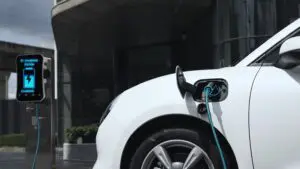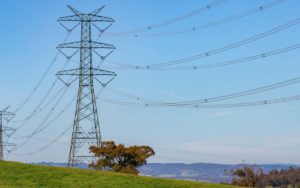
Solar is starting to have an impact on energy markets in Australia and around the world. And it has barely scratched the surface.
In its ground-breaking report in late 2013, the CSIRO predicted that up to half of Australia’s electricity needs will be met through distributed generation within a few decades.
With a few exceptions, that will almost exclusively be solar. And if the forecasts on the take-up of electric vehicles are close to being right, that will mean a significant part of Australia’s overall energy needs are met by solar – on the rooftops of homes and businesses, and in ground-mounted arrays close to demand sources.
Right now, it is estimated that rooftop solar already meets just over 2 per cent of electricity demand, but this is forecast – including by the Abbott government’s own review – to more than treble in coming years as more households rush to install solar.
In South Australia, rooftop solar already meets 6 per cent of demand – and up to one third during the daylight hours of some days – as part of that state’s extraordinary achievement of meeting more than 40 per cent of its electricity demand through wind and solar.
The problem is, the collective impact of Australia’s 4GW of rooftop solar – mounted on nearly 1.4 million homes and businesses – has been more or less invisible, apart from those coal-fired generators who say that solar is eroding their earnings.
About half of all rooftop solar PV production is consumed on sight, so the grid operator never sees it. Even the exports aren’t recognised in most data sources that show Australia’s electricity sources.
That makes the innovation that we are releasing today, through our partners at NEM-Watch, all the more exciting. For the first time, the contribution of small scale solar PV can be seen – along with that of brown and black coal, gas, wind and hydro. (And, in the state of Queensland, “other” sources such as biomass).
This is how it looks or click here for live data.
The contribution of solar is made possible through the APVI’s Solar Map, which publishes half hourly estimates of solar output based on regional installations and local weather conditions. The Solar Map can be seen here.
The next big innovation will be inclusion of large scale solar. The 102MW Nyngan solar plant being constructed by First Solar is one quarter complete, with around 25MW hooked up to the grid – although it is not yet contributing.
When that exceeds 50MW, we are likely to see big solar make its presence felt. (The 20MW Royalla solar farm does not show up in AEMO data, so is not visible here. The 10MW Greenough River solar farm is not in the National Electricity Market, and neither are many smaller solar installations in remote regions such as Alice Springs and elsewhere.
Paul McArdle, from Global Roam, said the emergence of several different technologies and policy priorities which further increases the complexity of the market that underpins an Australian essential service.
“Since late 2014 we’ve been delighted to work with RenewEconomy through the provision of the NEM-Watch widget to help provide a clear view of the mix of different generation sources supplying the NEM. The feedback we’ve received suggests that RenewEconomy readers do appreciate this service,” he said.
“From 20th March 2015, the addition of small-scale solar (from the ARENA-funded APVI project) makes the picture a better reflection of the nature of the electricity that we’re all consuming.
“We will continue watching with great interest to see how the NEM continues to evolve, and look forward to receiving more feedback.”
We will let you know when Nyngan starts.









